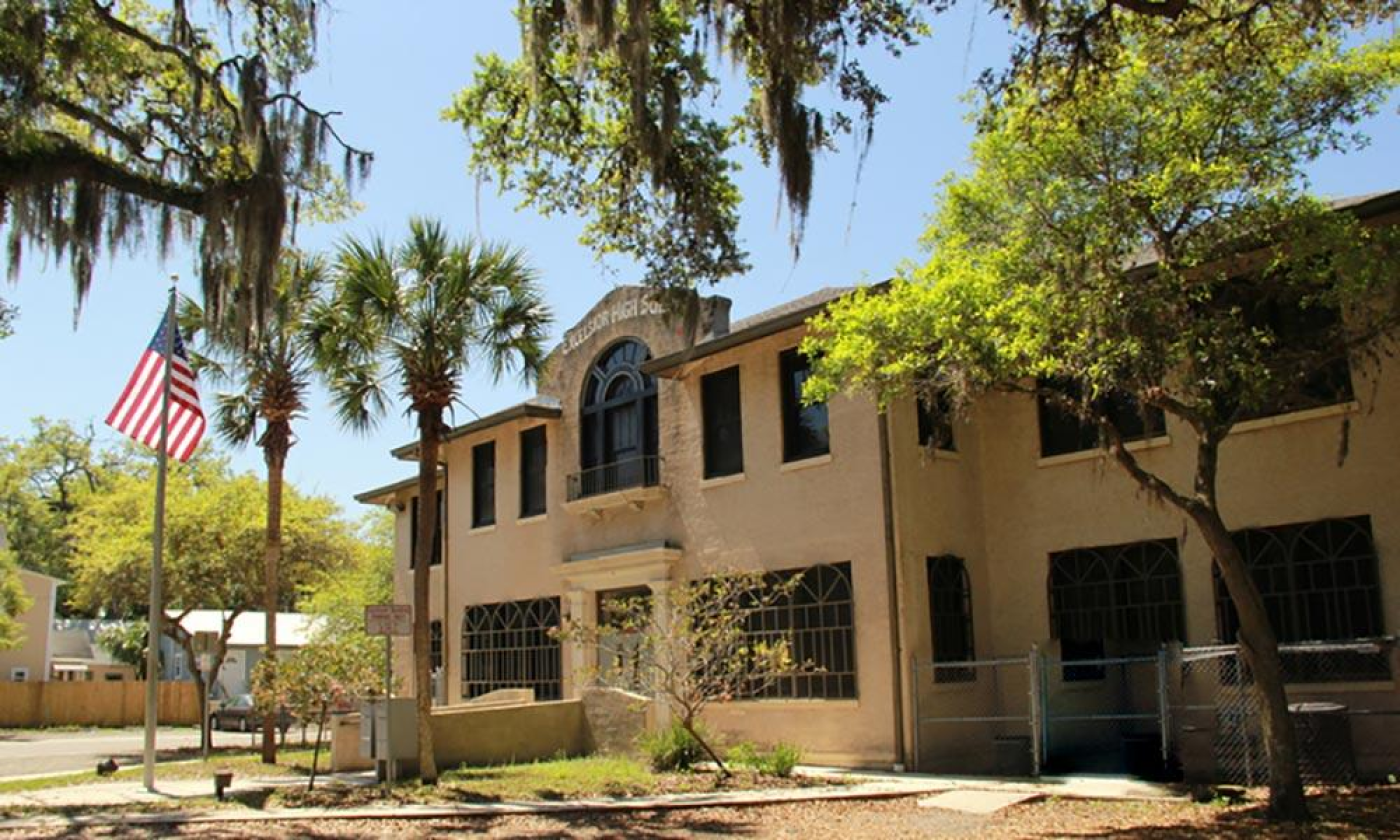Lincolnville Museum & Cultural Center
Lincolnville Museum & Cultural Center
Founding & Growth
The site where the LMCC stands today has been an essential black educational center since 1901. The school was simply called "School #2" until 1922 when it became "Colored Junior High School and Grade School."
For nearly 20 years, the school thrived and grew alongside the Lincolnville community. However, the student base outgrew the original building almost 20 years after the school's founding. So, from 1919 to 1924, members of the Lincolnville community petitioned the St. Johns County School Board to build a new school, to no avail.
After five years of rejection, the school board finally approved the funding for a new building. St. Augustine's chief architect, Fred Henderich, was hired to design a masonry structure. He used the Mediterranean Revival style to design many of St. Augustine's new constructions in the 1920s, including Florida Memorial University and Flagler Hospital. The building was completed in 1925, just as work began on the historic Bridge of Lions.
For the next 50 years, the new building served as Lincolnville's primary educational and community center. It underwent various name changes, evolving from "Colored School" to "Excelsior."
Excelsior School nurtured some of St. Augustine's top educators, nurses, entrepreneurs, entertainers, and athletes. Many of these individuals are still around to share their memories of Lincolnville's glory days.
Excelsior Closes Its Doors
Excelsior School closed in 1968, only two years before St. Johns County Schools were completely desegregated. For the next three decades, the building housed various local government offices.
In 1991, the Lincolnville Historic District was added to the National Register of Historic Places. Residents and city officials began to work together to restore the Excelsior Building, considered "the center of education and culture in Lincolnville." A group of former Excelsior students and other community members formed the Friends of Excelsior Inc. to complete this project.
The Excelsior Museum, 2005
In 2005, the Friends of Excelsior reached their goal, and the Excelsior Museum and Cultural Center was founded. It was renamed the Lincolnville Museum and Cultural Center in 2012.
The Lincolnville Museum and Cultural Center (LMCC) now hosts historical exhibitions, community events, and organizational meetings. The museum showcases a timeline of St. Augustine's history from 1526 to the present day, highlighting the contributions of Black individuals who were brought to, chose to come to, or were born in, the city.
The exhibits provide a unique perspective on these contributions, from informative plaques to immersive dioramas with historic furniture. One exhibit, "Women Who Made a Difference," stands out for exploring the lives of celebrated St. Augustine women from different historical eras and their achievements.
Additionally, the Lincolnville Museum has recently added a restaurant counter from Woolworth's Diner, once located on King Street, across from the Plaza de la Constitución. This artifact is the original "Whites Only" counter upon which four brave St. Augustinian citizens sat in defiance of local attempts to continue to enforce segregation. A powerful and significant artifact, this counter is displayed alongside Dr. Martin Luther King Jr.'s fingerprint card from his 1964 arrest.
Visiting the Lincolnville Museum and Cultural Center
Today, the museum is open seven days a week. It features a variety of exhibits that focus on the vital roles Black people have played in St. Augustine's history for more than 450 years.
The Lincolnville Museum and Cultural Center regularly hosts live music events, including the "Lincolnville Jazz at the Excelsior" series. They also host guest speakers, scholars, and historians.
To learn more about their programs, exhibits, and events, visit their website, here.
Resources
Online Resources
Read “The Forgotten History of Lincolnville” on the Florida Memory website by tapping here.
Read about the Lincolnville Historic District on the National Park Service website by tapping here.
Further Reading
St. Augustine, Florida, 1963-1964: Mass Protest and Racial Violence, edited by David Garrow
The Awakening of St. Augustine, by Thomas Graham


